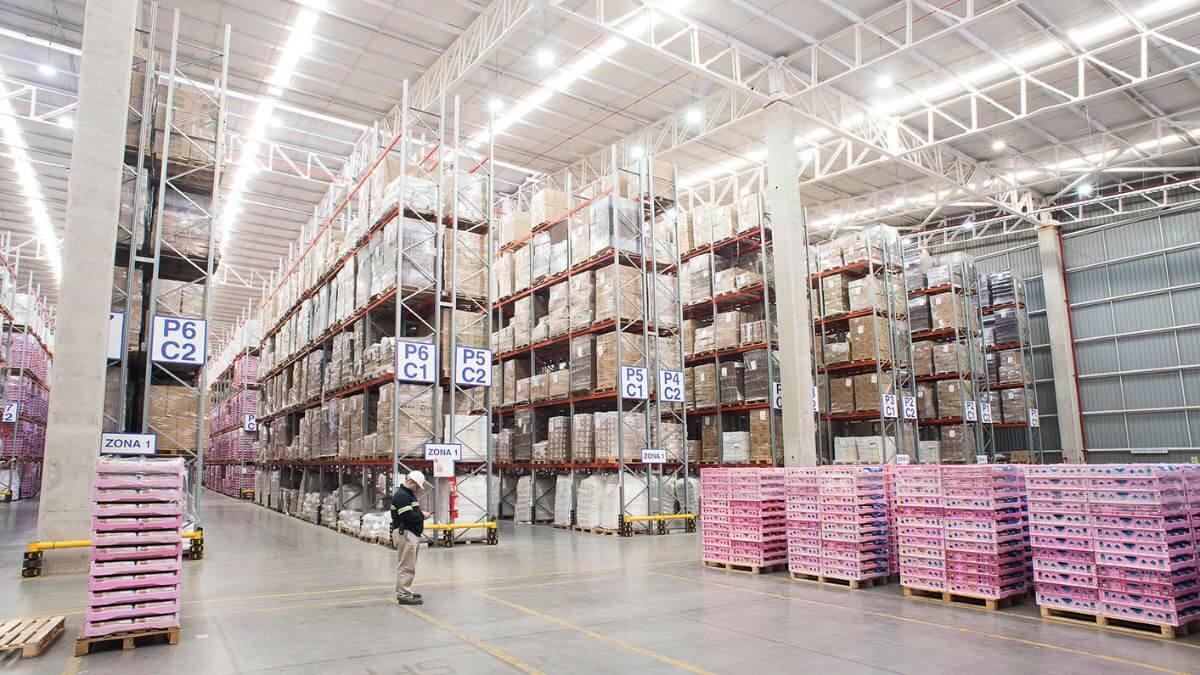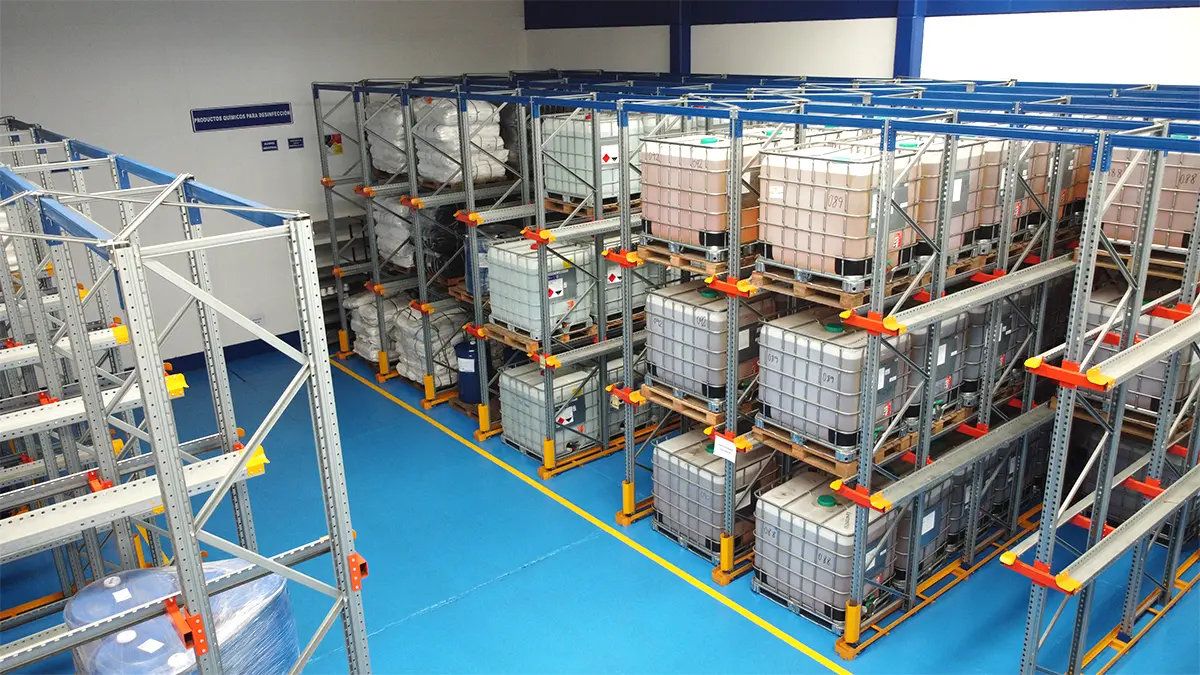Overstock is a common logistics problem in warehouses. Generally, excess inventory arises due to poor planning or lack of coordination between the different links in the supply chain.
What is overstock?
Overstock, or excess inventory, refers to the situation in which the quantity of products or materials in a warehouse considerably exceeds actual market demand.
This can lead to unnecessary product accumulation, where inflows exceed outflows, creating bottlenecks in the work flow.
This problem is often the result of poor planning and lack of coordination between key departments, such as sales, logistics and production. A common mistake in many companies is incorrectly assigning product rotation, which can lead to excess stock, especially in assembly-line production environments.
Excess inventory not only occupies valuable space in the warehouse, but can also increase storage-related costs such as maintenance and product obsolescence. It can also negatively impact the company’s liquidity, as the capital remains tied up in goods that are not being sold.

Common causes of excess stock
There are many reasons why companies end up accumulating excess inventory, some of which are:
Poor demand forecasting
Many companies face excess stock due to the wide variety of products they sell. As a result, they are more likely to have to deal with:
- A broad and diverse product range.
- Irregular and volatile demand patterns for certain items.
- Low demand for other products.
- Stringent requirements to maintain high service levels.
- Frequent product substitution.
Supply risks
Inconsistent delivery times by suppliers creates numerous challenges. To mitigate uncertainty, many supply chain teams tend to over-order, resulting in excess inventory to avoid stockout situations.
Supply chain complexity
In small companies with a single warehouse, it is easier to forecast the necessary stock levels. However, in more complex supply chains, which includes several warehouses, it is easier to lose sight of inventory needs. Even if you manage to optimise stock levels at each location, it is possible that you end up accumulating excess inventory across the supply chain.
Poor replenishment calculation
Optimum replenishment can only be achieved with the appropriate parameters to guide decisions. It is also essential to apply the correct replenishment model, since replenishment in a food environment differs considerably to that in a consumer products company.
If things such as available stock, delivery times, desired service level and the product life-cycle phase are not considered key parameters, excess inventory will gradually accumulate until it becomes a major problem.
Incorrect calculation of safety stock
If the safety stock levels are only checked every six months, they may be oversized in relation to expected demand, resulting in unnecessary excess inventory.
Management of product life-cycle
All products go through a life cycle that includes a peak in demand, followed by a stagnation and gradual decline. If inventory levels are not adjusted at the start of the decline, excess stock will be generated. If this problem is not properly managed, it may have negative consequences. Therefore, obsolete inventory management is vital.
100% stock availability
Greater availability usually results in better service levels, but achieving 100% availability involves a high cost. Therefore, service levels must be aligned with the importance and value of each product.
Excess and obsolescence
Unforeseen changes in product trends can exceed our forecasts and render a product obsolete, sometimes without warning. Excess inventory is prejudicial to the business, as it occupies valuable space in the warehouse, generates additional costs and runs the risk of becoming obsolete.
How can you avoid overstock in the warehouse?
Preventing overstock is essential to ensure that logistics operations are efficient and profitable. We outline some effective strategies below:
Demand forecasting
Carrying out a detailed analysis of historical data and market trends is essential to more accurately forecasting demand. A well-founded forecast allows companies to plan their inventory levels more effectively.
Review of replenishment policies
Adjusting replenishment thresholds is key to avoiding over-ordering. Regularly and updating these policies can help to align them with actual market demand.
Implementation of inventory management systems
Use of specialist software allows real-time monitoring of inventory levels. This facilitates purchasing adjustments based on actual demand, thus avoiding unnecessary product accumulation.
Staff training
Ensuring that sales and logistics teams are well trained in inventory management best practices is crucial. Good communication and alignment between these departments is essential to prevent overstock.

Overstock risks
Overstock not only occupies physical space, but also entails various risks that can negatively impact the company.
Additional costs
Naturally, keeping excess inventory involves storage and maintenance costs and the risk of losses due to obsolescence, which can affect profitability.
Impact on liquidity
The capital tied up in unsold products can limit a company’s liquidity, affecting its ability to operate and grow.
Decision-making difficulties
Excess inventory can complicate the analysis of actual business needs, leading to poorly informed and potentially harmful decisions.
Customer dissatisfaction
Outdated inventory or inventory that does not move fast enough can affect product availability, which negatively impacts the customer’s experience.
Do overstock warehouses exist?
Yes, there are warehouses specialised in managing overstock.
These spaces offer temporary solutions for companies facing excess inventory and operate as short-term storage locations, and can facilitate the redistribution of products to other markets or liquidation.
However, depending on these warehouses should not be seen as a long-term solution, but rather integrated into a broader inventory strategy that prioritises efficiency and profitability.
At AR Racking, as industrial storage experts, we have solutions adapted to each company’s specific needs, regardless of their size or sector. Our team of experts is ready to optimise your storage systems and improve the efficiency of any logistics operation. Contact us for advice on the best solution for you.













